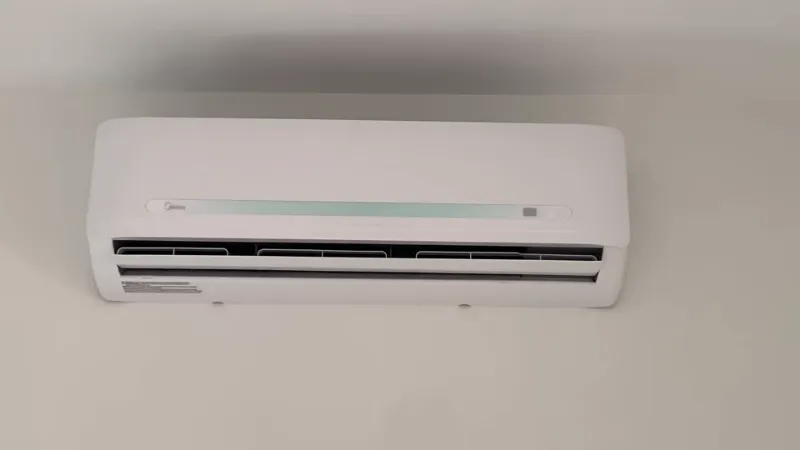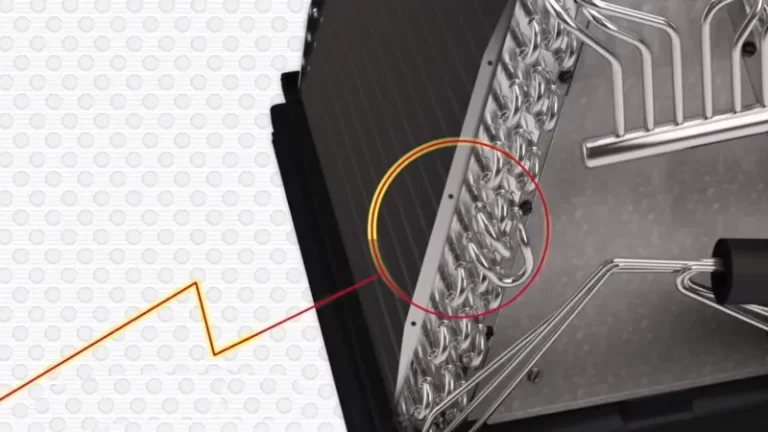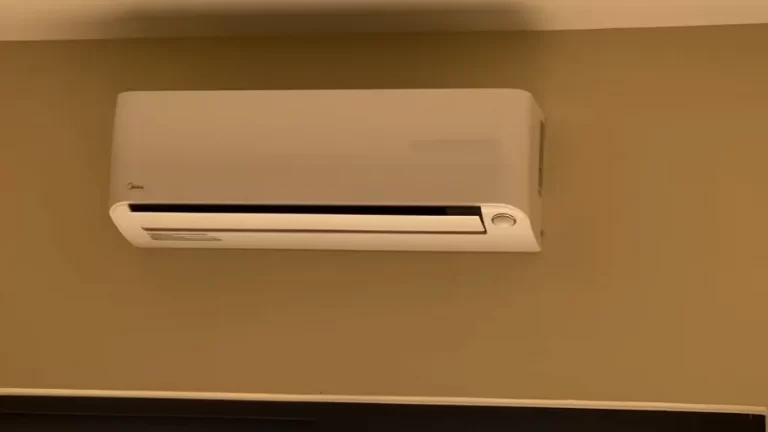How a Dual Inverter Air Conditioner Works? [Maximizing Efficiency, Reduce Costs]
A dual inverter air conditioner is a relatively new and advanced form of air conditioning that uses two rotary compressors to provide faster cooling, reduced noise levels, and greater energy savings.
Understanding how a dual inverter air conditioner works is important for several reasons, including optimizing its performance, ensuring its longevity, and maximizing its energy efficiency. In this article, we will delve into the working mechanism of a dual inverter air conditioner and explain how it differs from a regular air conditioner.
You'll Learn About
Components of a Dual Inverter Air Conditioner
A dual inverter air conditioner has several unique components that work together to provide efficient and effective cooling.
Rotary Compressor
The first important component of a dual inverter air conditioner is the rotary compressor. As the name suggests, this type of compressor uses rotary motion to compress the refrigerant, which is then circulated through the system to cool the air.
Dual inverter air conditioners have two rotary compressors, which work in tandem to provide faster and more efficient cooling. This is because each compressor can operate at different speeds, which allows them to adjust to the cooling needs of the room more accurately.
Electronic Inverter
The electronic inverter is another essential component of a dual inverter air conditioner. An inverter is a device that can control the speed of the compressor by adjusting the frequency of the electrical current that powers it.
In a dual inverter air conditioner, the electronic inverter adjusts the speed of both compressors based on the temperature of the room and the desired temperature set by the user. This allows the air conditioner to operate at a lower speed when the temperature is close to the desired level, which reduces energy consumption and noise.
Several Other Parts
In addition to these primary components, a dual inverter air conditioner also has several other parts that contribute to its efficiency. These include the heat exchanger, which transfers heat from the refrigerant to the outside air, the blower, which circulates the cooled air through the room, and the filter, which removes impurities from the air.
Overall, the combination of two rotary compressors, an electronic inverter, and other efficient components makes a dual inverter air conditioner a highly effective and energy-efficient cooling solution. By understanding the role of each component, users can better maintain and optimize their air conditioner for optimal performance and longevity.

How a Dual Inverter Air Conditioner Works
A dual inverter air conditioner is designed to provide faster cooling, reduced noise levels, high energy savings, and shorter wait times with greater stability. It works by using two rotary compressors that work in tandem to provide more compressed refrigerant than a single rotary compressor. In addition, it uses an electronic inverter to adjust the compressor speed and a variety of other parts that contribute to its efficiency.
At Start
At the start, when the air conditioner is turned on, it operates at full power to cool the room. This means that the rotary compressors are running at maximum speed to provide maximum cooling capacity. The air conditioner will continue to run at this high speed until it achieves the desired temperature in the room.
When Temperature is Achieved
Once the temperature is achieved, the air conditioner begins to monitor the temperature in the room. It does this using a temperature sensor that is typically located near the air intake. The sensor is used to determine when the air conditioner needs to turn on again to cool the room.
The electronic inverter then adjusts the compressor speed to match the temperature requirements. This means that the compressor speed is reduced, which in turn reduces the power consumption of the air conditioner. This reduction in power consumption can result in significant energy savings over time.
Temperature Comes to Desired Temperature
When the room temperature comes closer to the desired temperature, the power consumption by the air conditioner is reduced. This is because the compressor speed is lowered, and the air conditioner is operating more efficiently. The air conditioner will continue to operate in this mode until it is needed again to cool the room.
Takes Some Time to Circulate Air
The air conditioner will wake up every 3 minutes to circulate some air and check to see if more cooling is needed. This is a critical function of the air conditioner, as it ensures that the room is always at the desired temperature, without wasting energy by running the air conditioner at full power unnecessarily.
In summary, a dual inverter air conditioner works by using two rotary compressors, an electronic inverter, and other components to cool a room efficiently. By adjusting the compressor speed and reducing power consumption, it can provide high energy savings and greater stability. The air conditioner also wakes up every 3 minutes to circulate air and ensure that the room remains at the desired temperature.
Advantages of a Dual Inverter Air Conditioner
Dual inverter air conditioners offer several advantages over traditional air conditioners. Here are some of the main benefits:
Faster Cooling
Dual inverter air conditioners use a twin rotary compressor that can provide more compressed refrigerant than a single rotary compressor. This means that the air conditioner can cool a room faster and more efficiently.
Reduced Noise Levels
The twin rotary compressor in a dual inverter air conditioner operates more quietly than a single rotary compressor. This helps to reduce noise levels in the room and make for a more comfortable environment.
High Energy Savings
Dual inverter air conditioners use an electronic inverter to adjust the speed of the compressor. This allows the unit to consume less energy while still providing efficient cooling. The energy savings can be substantial, with some models claiming to reduce energy consumption by up to 70% compared to traditional air conditioners.
Greater Stability
Because the compressor in a dual inverter air conditioner can operate at different speeds, the unit can maintain a more stable temperature in the room. This helps to reduce fluctuations in temperature and maintain a more comfortable environment.
Precise Temperature Control
Dual inverter air conditioners can provide precise temperature control, which is especially important in extreme temperatures. With the ability to adjust the compressor speed in small increments, the unit can achieve a desired temperature more accurately and maintain it more consistently.
Overall, dual inverter air conditioners offer several advantages that make them an attractive option for those looking to stay cool and comfortable while also saving energy and reducing noise levels.
Environmental Benefits of Dual Inverter Air Conditioners
Dual inverter air conditioners are not only advantageous to users but also to the environment. Here are the environmental benefits of using a dual inverter air conditioner:
Less Energy Consumption
Dual inverter air conditioners consume less energy compared to conventional air conditioners. By adjusting the compressor speed according to the cooling needs, it reduces the amount of energy used in the cooling process.
The electronic inverter helps to regulate the power supplied to the air conditioner, which ensures that only the required power is used. With the reduced energy consumption, there is less pressure on the power grid, which results in less fossil fuel consumption.
Fewer Greenhouse Gases Produced
The less energy consumed, the fewer greenhouse gases produced. Greenhouse gases trap heat in the atmosphere and cause global warming. Air conditioners consume a significant amount of energy, and by using a dual inverter air conditioner, the energy consumption is reduced, which results in fewer greenhouse gases produced.
With the reduced greenhouse gases produced, the air conditioner helps to minimize the carbon footprint and reduces environmental degradation.
How It Helps in the Long Run
The use of dual inverter air conditioners in the long run helps to reduce energy consumption, which results in fewer greenhouse gases produced. It also helps to save money on electricity bills since the energy consumption is lower.
Over time, this translates to significant savings and reduced environmental impact. Additionally, as the energy consumption is reduced, it helps to conserve the environment for future generations.
the use of dual inverter air conditioners has environmental benefits, which make it an ideal choice for users who are environmentally conscious. With its reduced energy consumption and fewer greenhouse gases produced, it helps to minimize the carbon footprint and reduces environmental degradation. As such, it’s a sustainable choice for those who want to save money on electricity bills and conserve the environment.
Maintenance and Cost of Dual Inverter Air Conditioners
Dual inverter air conditioners have some unique components that require special maintenance considerations. Here are some important points to keep in mind:
Maintenance Requirements
- Filter cleaning: The filters in a dual inverter air conditioner should be cleaned regularly to ensure proper air flow and to prevent the build-up of dust and debris that can hinder the unit’s performance.
- Compressor cleaning: The rotary compressor in a dual inverter air conditioner should also be cleaned periodically to ensure efficient operation.
- Professional servicing: It is recommended to have a professional technician service the unit every year to ensure it is functioning properly and to identify any potential issues before they become major problems.
Cost Considerations
- Initial cost: Dual inverter air conditioners are typically more expensive than standard air conditioners. However, this cost may be offset by the long-term energy savings they provide.
- Operating costs: Dual inverter air conditioners are generally more energy-efficient than standard air conditioners, which can result in lower operating costs over time.
- Maintenance costs: While dual inverter air conditioners may have higher maintenance requirements, regular maintenance can help prevent more costly repairs down the line.
It’s important to keep in mind that while a dual inverter air conditioner may have a higher upfront cost, it can save you money over time with reduced energy consumption and lower operating costs. Additionally, regular maintenance can help extend the lifespan of the unit and prevent major repair expenses.
Editor’s Note
A dual inverter air conditioner is a type of air conditioner that uses advanced technology to provide faster cooling, reduced noise levels, high energy savings, and greater stability. It achieves this by using two rotary compressors and two compression chambers instead of one, which allows for more efficient and effective cooling.
When you turn on a dual inverter air conditioner, it operates at full power to cool the room to the desired temperature. Once the room temperature reaches the desired level, the air conditioner reduces its power consumption to maintain the temperature, rather than turning off entirely like a traditional air conditioner.
The dual inverter air conditioner constantly monitors the temperature of the room and adjusts the compressor speed accordingly to maintain the desired temperature. This allows for more precise temperature control, which can result in greater comfort and energy savings.
In addition to the dual rotary compressors, the dual inverter air conditioner also uses an electronic inverter to control the power supply to the compressor. This helps to reduce energy consumption and increase the efficiency of the air conditioner.
Overall, a dual inverter air conditioner is an advanced and efficient way to cool your home or office. Its use of two rotary compressors and advanced technology allows for faster cooling, precise temperature control, and reduced energy consumption.
Frequently Asked Questions
What are some common problems with dual inverter air conditioners and how can they be fixed?
A: Some common problems with dual inverter air conditioners include leaking refrigerant, malfunctioning compressors, and clogged air filters. Leaking refrigerant can be fixed by a professional technician who will locate and seal the leak before recharging the refrigerant.
Malfunctioning compressors may require a replacement or repair by a qualified technician. Clogged air filters can be cleaned or replaced to restore proper airflow.
Can a dual inverter air conditioner be used in a large room or commercial space?
A: Dual inverter air conditioners are suitable for use in large rooms or commercial spaces, but it is important to choose a model that is appropriately sized for the space. A unit that is too small may struggle to cool the space effectively, while a unit that is too large may cycle on and off frequently, wasting energy and reducing efficiency.
How does a dual inverter air conditioner compare to other types of air conditioners in terms of energy efficiency?
A: Dual inverter air conditioners are generally more energy efficient than traditional air conditioners due to their variable speed compressors and electronic inverters, which adjust the cooling output to match the current temperature and humidity. This results in less wasted energy and lower overall energy consumption.
Are dual inverter air conditioners more expensive than traditional air conditioners?
A: Dual inverter air conditioners can be more expensive than traditional air conditioners due to their advanced technology and energy efficiency features. However, the higher upfront cost is often offset by lower long-term operating costs and energy savings. Whole house air conditioners might be a good option than these.
Can a dual inverter air conditioner be used as a heating system as well?
A: Some dual inverter air conditioners are equipped with a heat pump function, which allows them to provide both heating and cooling. This makes them a versatile option for year-round comfort in areas with moderate climates. However, in areas with very cold winters, a separate heating system may be necessary.
Conclusion
A dual inverter air conditioner is a highly efficient and environmentally-friendly option for cooling and heating your home. By utilizing electronic inverter technology and rotary compressors, it is able to maintain a stable temperature while using less energy and producing less noise.
This results in a more comfortable living space, reduced energy costs, and fewer greenhouse gas emissions. It is important to keep in mind that regular maintenance and careful consideration of the initial cost are necessary for the longevity and cost-effectiveness of a dual inverter air conditioner.
Understanding how this type of air conditioner works and its benefits can help you make an informed decision when it comes to selecting a cooling and heating system for your home.


